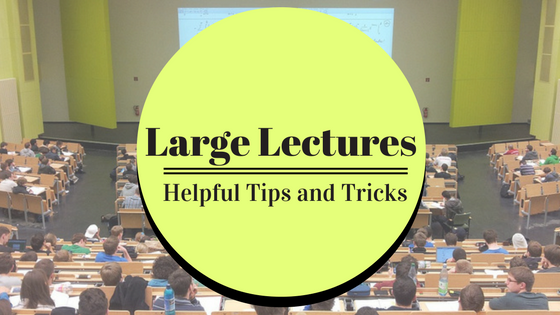
Learning that they will be teaching a 100+ person lecture is often a frightening moment for many first-time professors. Large lectures have unique benefits and detriments, and effective andragogy is critical to ensuring student learning in lecture-sized courses. Overall, professors should try to ensure active participation of students, which can help them retain and understand the material better. Follow these three tips to create student buy-in and participation in lectures!
First, establishing clear learning goals – both for each class and for the entire semester – is critical for students’ understanding of and interest in the topic. Each class should have a clear objective or goal for student learning that is manageable and attainable. Although the goals themselves will depend on what course you are teaching, effective learning goals use active terms with very concrete, specific meanings (for example, “to organize,” “to differentiate,” “to analyze). In contrast to vague, ambiguous language like “to understand,” using specific, concrete language allows professors to assess whether students have met the learning goal.
Second, professors that include opportunities for active learning in their lectures improve learning outcomes. When students are active participants in the formation of knowledge, rather than passive listeners, students learn better and retain more information. Active learning exercises like think-pair-share or clicker response systems can ensure that students are processing and applying knowledge you deliver in lectures, and active participation prompts have the added benefit of refreshing students to help them focus better on the parts of the lecture that come after the active learning.
Third, providing more and shorter feedback to students throughout the semester can help students be more active participants in lecture classes. Instead of just relying on a midterm and a final, which is stressful for both students and professors, use short, formative assessments during class time and during labs or recitations. These assessments could take many forms, such as exit tickets asking students about the content of the day or short weekly quizzes in labs or recitations. Using lower-stakes, more formative assessments can reduce student stress and ensure they aren’t drifting off in the weeks between midterms and finals.

